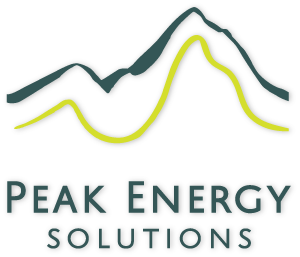Market Access Risks
Peak Energy Solutions dramatically reduces the risk of participating in Market Access Programs so that contractors, customers, and other project developers can safely engage with this new market without disrupting their normal operations. In the Market Access model, participants assume all the risk that projects will deliver the estimated energy savings. If a project does not deliver savings, participants do not get paid. But as anyone with experience in building performance knows, building energy consumption rarely aligns with upfront estimates, resulting in individual project performance and payments significantly above and below expectations. PES removes this risk by bundling projects from many different sources into a single portfolio, enabling the over- and under-performing projects to be combined into a portfolio with high confidence of achieving the expected results.
Here are some of the risks we handle for you:
Payment Delay:
Your first payment should arrive between 5 and 11 months after project completion, with final payment arriving 14-17 months after installation. 10%-20% of projects (those with NREs) will not receive any payment for 14 to 26 months.
Payment Uncertainty:
You know that your energy efficiency retrofit will save energy, but that does not necessarily mean you will get paid:
Payment is based on the energy savings at the meter. This means that if the customer does anything to increase consumption during the performance year (extend operating hours, increase production, add staff, add equipment, etc.) your energy savings and payment will be reduced or eliminated.
You pay for any projects that increase consumption. If your project increases net usage during the performance year, the value of that “negative savings” is subtracted from the value of the rest of your portfolio. Your whole portfolio is at risk if you have any projects that increase consumption. Large projects are particularly risky.
Savings and payments will be adjusted using an unfinished, unproven methodology. The IOUs are going to adjust for Covid and other exogenous factors using “granular profiles” instead of the standard “comparison group” approach. We don’t know if the new method will be accurate because it’s new and unproven, but when it was applied to PG&E’s OBF portfolio it reduced the value by nearly 50%. This magnitude of reduction in value could happen to MAP projects too.
Will future regulatory changes during the performance period reduce or eliminate payment? Will you still get paid if CPUC changes customer eligibility requirements, savings calculation methods, product eligibility requirements, savings value levels, or other rules that are used to determine project payment? PA’a and Implementers are indicating this is not an issue, but read the contract language yourself; this is not guaranteed and it has happened before.
It’s critical to have a large number of projects in your organization’s portfolio. To achieve CPUC’s accuracy requirements PA’s need approximately 300 projects that save 10% of the facility’s total usage. Applying these statistics to the smaller portfolios of individual aggregators it’s easy to see how they are susceptible to significant variation simply because they don’t contain enough projects. Participating directly in MAP with a small portfolio is very risky, especially with fewer than 40 projects.
Too much uncertainty for your organization to take on alone? Consider our offer:
Guaranteed Payment. You will know the amount of payment you will receive for your project before you commit to working with us.
Fast Payment. We pay you in full 15 days after project installation and documentation is complete.
Zero Performance Risk. We assume all risk for payment uncertainty — you get paid and you’re done.
On top of that, we can provide your project 0% financing for up to 10 years.

